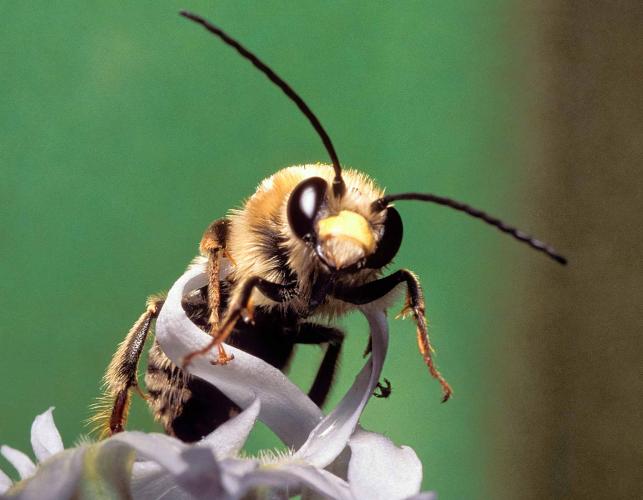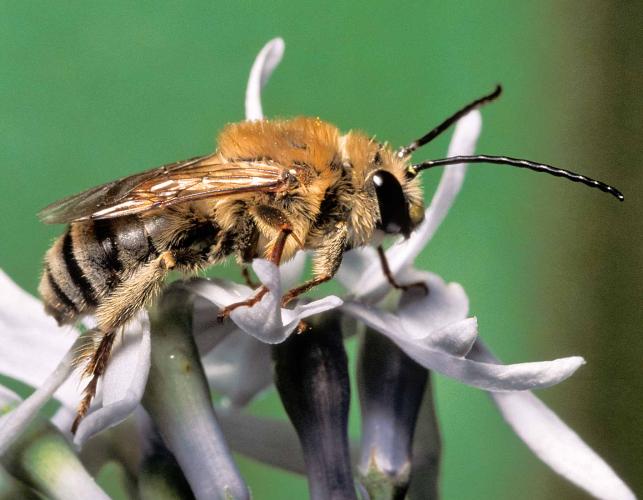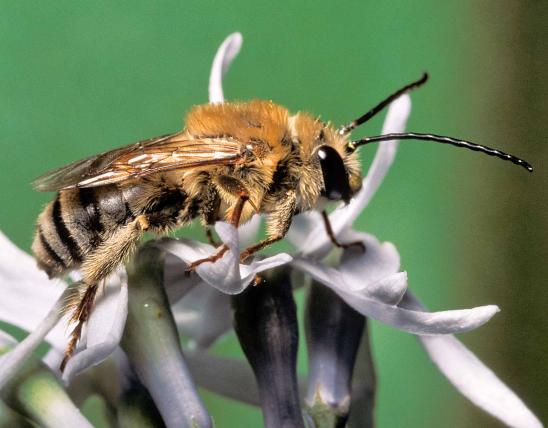
Longhorn bees are named for their long antennae, which make these fuzzy, medium-sized bees look rather cute. Many have yellow faces. Two major genera in this group are Eucera and Melissodes. Longhorn bees are in the same family (Apidae) as honeybees, bumblebees, carpenter bees, and others.
Most longhorn bees have very particular types of plants they pollinate. For example, one species, the worthy longhorn (Florilegus condignus), specializes in pollinating the various types of pickerel weeds (Pontederia spp.), common on the shorelines of lakes and ponds.
Also in the longhorn bee tribe (group of genera) are the squash bees (Peponapis and Xenoglossa spp.), which only collect pollen from squashes, gourds, and pumpkins (Curcurbita spp.), and they are extremely important in the pollination of these plants. They are active surprisingly early in the day, just when squash flowers are opening. They are often trapped when the squash blossom wilts closed on them in the midday heat. They can cut their way out of the flower if it gets too hot. Meanwhile, they become covered with pollen as they move around in their little squash-blossom shelter, and once free, they move the pollen to the stigma of another plant.
Learn more about these and other apid bees on their group page.
Status
Valuable native pollinators. Not aggressive.



































